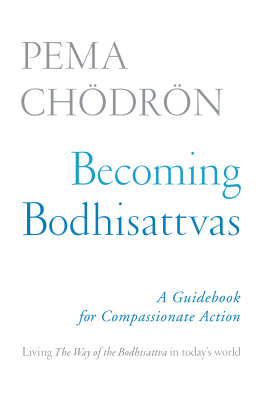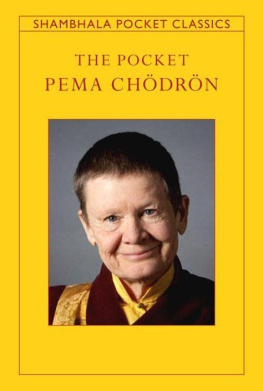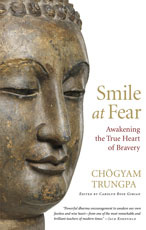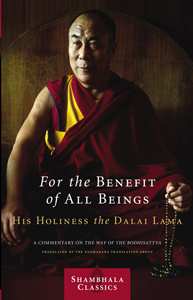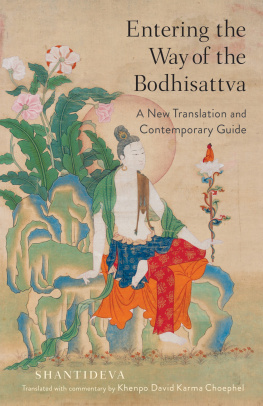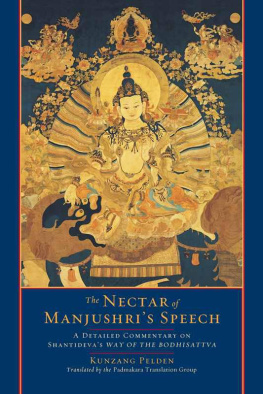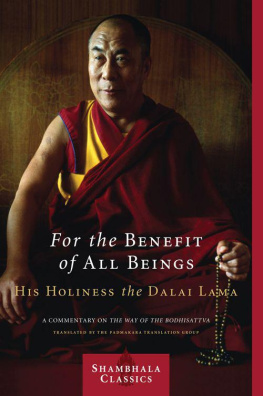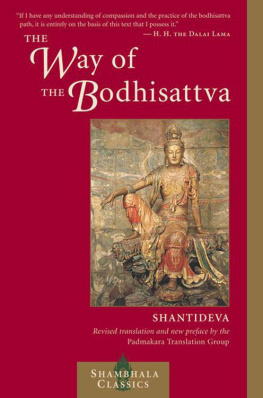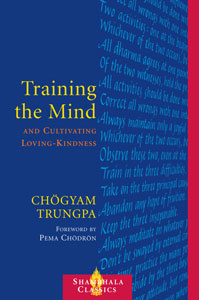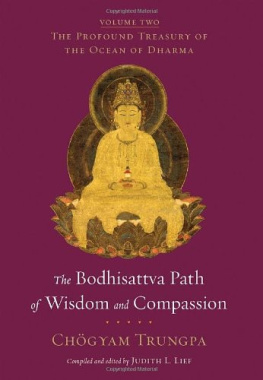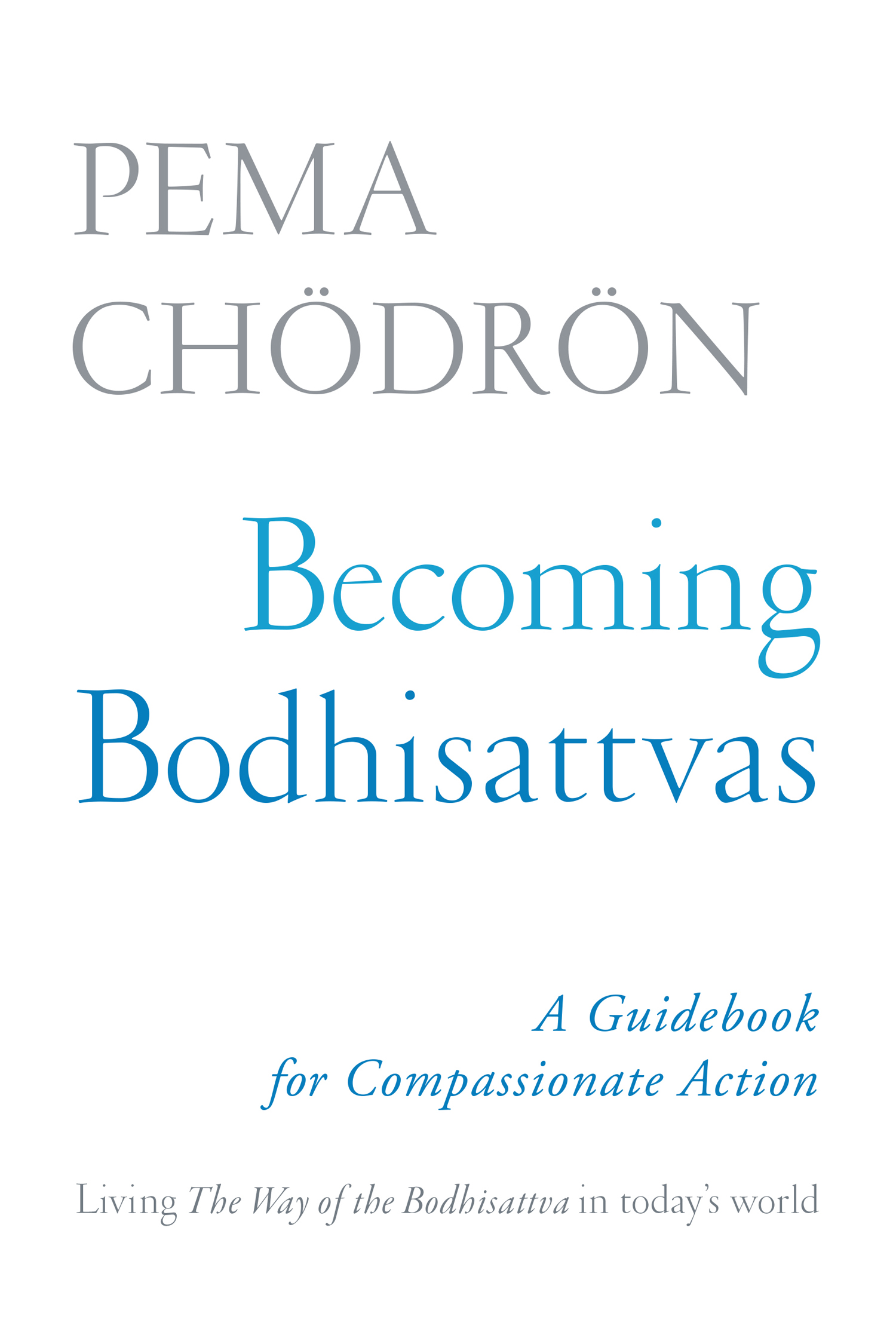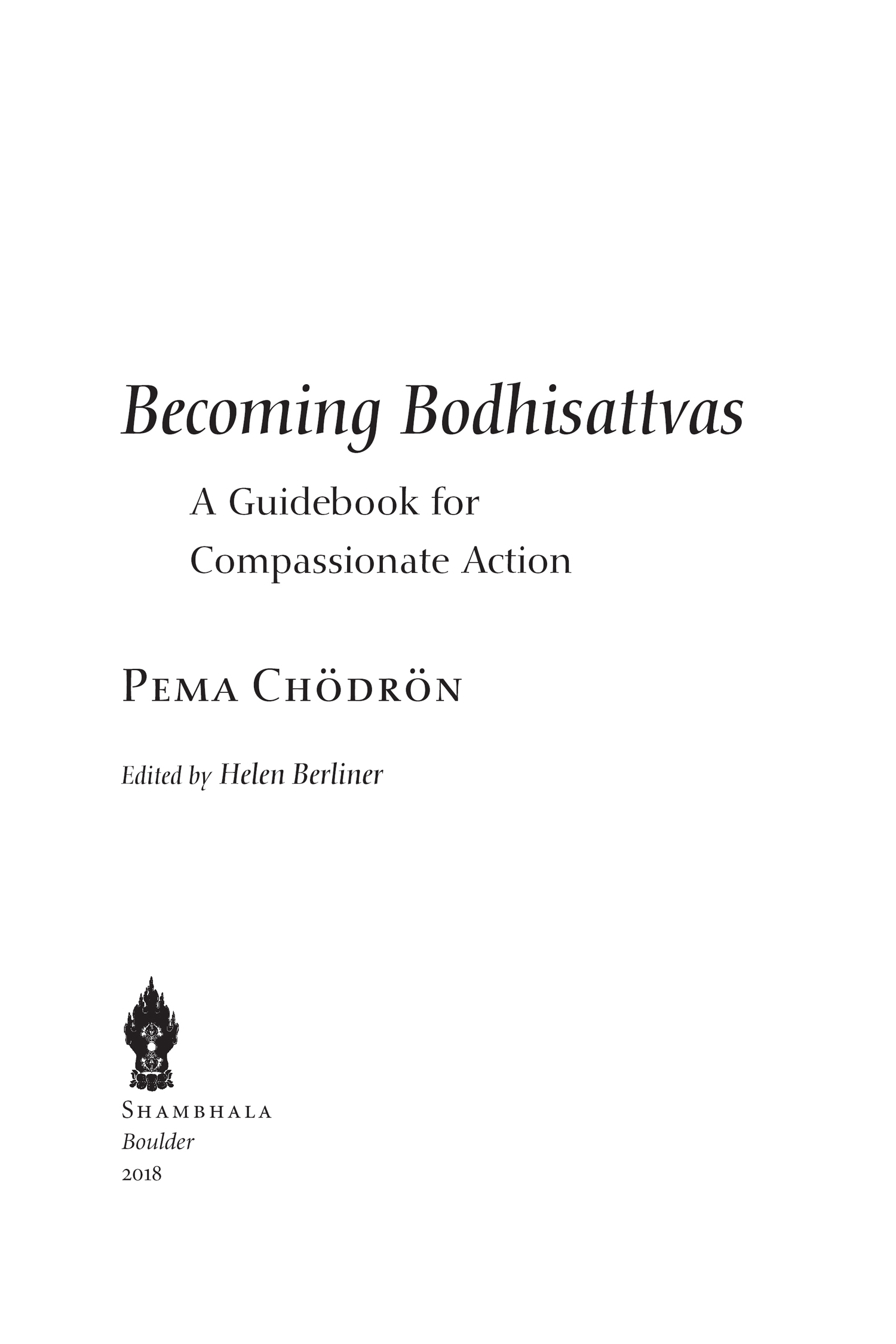Contents
B OOKS BY P EMA C HDRN
Awakening Loving-Kindness
Comfortable with Uncertainty
The Compassion Book
Living Beautifully
No Time to Lose
The Places That Scare You
The Pocket Pema Chdrn
Practicing Peace
Taking the Leap
When Things Fall Apart
The Wisdom of No Escape
S HAMBHALA P UBLICATIONS , I NC .
4720 Walnut Street
Boulder, Colorado 80301
www.shambhala.com
2005 by Pema Chdrn
English translation of The Way of the Bodhisattva (Bodhicharyavatara)
1997 by the Padmakara Translation Group, reprinted with permission.
This book was previously published with the title
No Time to Lose: A Timely Guide to the Way of the Bodhisattva.
All rights reserved. No part of this book may be reproduced in any form or by any means, electronic or mechanical, including photocopying, recording, or by any information storage and retrieval system, without permission in writing from the publisher.
L IBRARY OF C ONGRESS C ATALOGING - IN -P UBLICATION D ATA
Names: Chdrn, Pema, author. | Berliner, Helen, editor.
Title: Becoming bodhisattvas: a guidebook for compassionate action / Pema Chdrn.
Other titles: No time to lose
Description: Boulder, Colorado: Shambhala, 2018.
This book was previously published by Shambhala under the title No Time to Lose.
Includes bibliographical references and index.
Identifiers: LCCN 2018015778 | ISBN 9781611806328 (paperback)
eISBN9780834841666
Subjects: LCSH : ntideva, active 7th century. Bodhicaryvatra. | Mahayana BuddhismDoctrines. | BISAC : RELIGION / Buddhism / Tibetan. | BODY , MIND & SPIRIT / Meditation. | SELF - HELP / Meditations.
Classification: LCC BQ 3147.C56 2018 | DDC 294.3/85dc23
LC record available at https://lccn.loc.gov/2018015778
v5.3.2
a
To my teacher,
Chgyam Trungpa Rinpoche,
I bow down
Contents
People Like Us Can Make a Difference
T HE W AY OF THE B ODHISATTVA was composed in India over twelve centuries ago, yet it remains remarkably relevant for our times. This classic text, written by the Indian sage Shantideva, gives surprisingly up-to-date instructions for people like you and me to live sanely and openheartedly, even in a very troubled world. It is the essential guidebook for fledgling bodhisattvas, those spiritual warriors who long to alleviate suffering, their own and that of others. Thus it belongs to the mahayana, the school of Buddhism that emphasizes all-inclusive compassion and the cultivation of our flexible, unbiased wisdom mind.
According to tradition, to write a commentary on a text such as The Way of the Bodhisattva (or Bodhicharyavatara in Sanskrit), one must have advanced spiritual realization or have been directed in a dream to compose such a treatise. Since I unfortunately have neither qualification, I simply offer this teaching with the sincere aspiration that it may help new readers to benefit from Shantidevas text as much as I have.
My own appreciation of The Way of the Bodhisattva came about slowly, and only after I became familiar with Patrul Rinpoche, the great wandering yogi of nineteenth-century Tibet. From his writings and the outrageous stories told about him, I came to respect and love this man dearly. He had no fixed abode, no belongings, and was very unconventional and spontaneous in his behavior. Yet he was a powerful and very wise teacher, whose spiritual realization manifested in all the situations of his life. He related to people with great compassion and tenderness, but also with ruthless honesty.
When I discovered that Patrul Rinpoche had taught this text hundreds of times, it caught my attention. He would wander around Tibet teaching anyone who would listen: rich and poor, nomads and aristocrats, scholars and people who had never studied the Buddhist teachings. Hearing this, I thought, If this eccentric man, this dedicated yogi, loved the text so much, there must be something to it. So I began to study it in earnest.
Some people fall in love with The Way of the Bodhisattva the first time they read it, but I wasnt one of them. Truthfully, without my admiration for Patrul Rinpoche, I wouldnt have pursued it. Yet once I actually started grappling with its content, the text shook me out of a deep-seated complacency, and I came to appreciate the urgency and relevance of these teachings. With Shantidevas guidance, I realized that ordinary people like us can make a difference in a world desperately in need of help.
I also began to wish for a less scholarly commentary than those available, one that might reach a wide audience and be accessible even to people who know nothing of the Buddhist teachings.
For these reasons, when I was requested to teach The Way of the Bodhisattva at Gampo Abbeys monastic college, I was eager to give it a try. The transcripts of those talks form the basis of this book. My commentary on Shantidevas teaching is very much a students view and a work in progress. Unquestionably, with the help of my teachers, my understanding of these verses will deepen considerably over time; nevertheless, I am truly delighted to share my enthusiasm for Shantidevas instructions.
Shantideva was born a prince in eighth-century India and, as the eldest son, was destined to inherit the throne. In one account of the story, the night before his coronation, Shantideva had a dream in which Manjushri (the bodhisattva of wisdom) appeared to him and told him to renounce worldly life and seek ultimate truth. Thus Shantideva left home immediately, giving up the throne for the spiritual path, just as the historical Buddha had done.
In another version, the night before his enthronement, Shantidevas mother gave him a ceremonial bath using scalding water. When he asked why she was intentionally burning him, she replied, Son, this pain is nothing compared to the pain you will suffer when youre king, and on that very night, he rapidly departed.
Whatever the catalyst, Shantideva disappeared into India and began living the life of a renunciate. Eventually he arrived at Nalanda University, which was the largest, most powerful monastery in India at the time, a place of great learning that attracted students from all over the Buddhist world. At Nalanda he was ordained a monk and given the name Shantideva, which translates as God of Peace.
Contrary to what his later reputation suggests, Shantideva was not well liked at Nalanda. Apparently he was one of those people who didnt show up for anything, never studying or coming to practice sessions. His fellow monks said that his three realizations were eating, sleeping, and shitting. Finally, in order to teach him a lesson, they invited him to give a talk to the entire university. Only the best students were accorded such an honor. You had to sit on a throne and, of course, have something to say. Since Shantideva was presumed to know nothing, the monks thought he would be shamed and humiliated into leaving the university. Thats one story.
Another version presents a more sympathetic view of Nalanda, whereby the monks hoped that by embarrassing Shantideva, they could motivate him to study. Nevertheless, like all sentient beings who are building a case against someone, they probably derived a certain joy from the possibility of making Shantideva squirm. Its said they tried to further humiliate him by making the throne unusually high, without providing any stairs.

